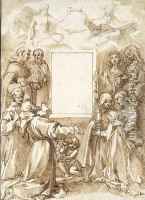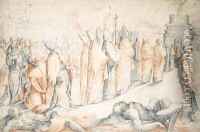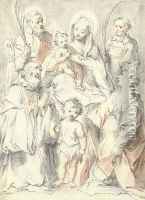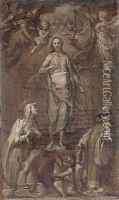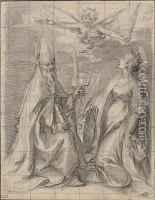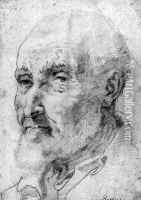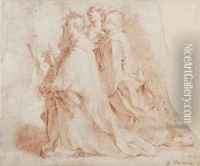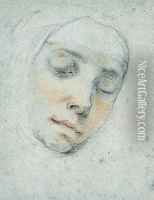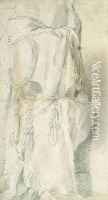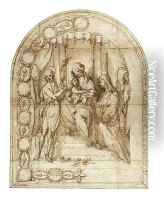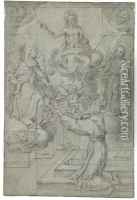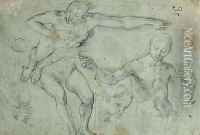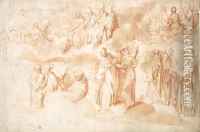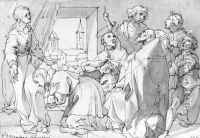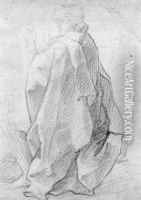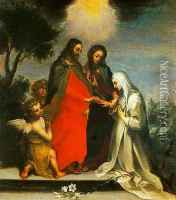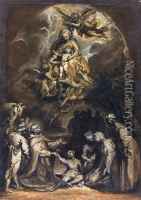Francesco Vanni Paintings
Francesco Vanni was an Italian painter active during the late Renaissance period, often regarded as one of the leading artists in Siena of his time. He was born in Siena in 1563, and his early training is somewhat uncertain, although he may have studied with his stepfather, the painter Arcangelo Salimbeni, and later with Giovanni Battista Naldini. Vanni's style combined elements of Mannerism with the emerging Baroque sensibility, and he was influenced by the work of Federico Barocci and the Counter-Reformation's demand for clarity and emotional involvement.
Vanni's career was largely based in Siena, although he undertook commissions in other cities such as Rome, where he was influenced by the work of Barocci and the Roman school. In Siena, he worked on various public and private projects, painting altarpieces, frescoes, and other religious works that often reflected the Counter-Reformational emphasis on devotional intensity and dramatic expressiveness.
Notable among his works are the 'Assumption of the Virgin' for the cathedral of Siena and the 'St. Paul' for the church of San Spirito. His frescoes in the Palazzo Pubblico are considered some of his masterpieces, where he displayed a mature style characterized by dynamic composition and vibrant color schemes.
Throughout his career, Vanni was recognized for his ability to convey profound religious themes with a combination of realism and emotion. His works were particularly appreciated for their narrative quality and the skillful use of chiaroscuro to create depth and volume.
Francesco Vanni died in Siena in 1610. His legacy lived on through his works and through his son, Raffaello Vanni, who became a painter as well. Francesco's contributions to Sienese painting were important in the transition from the mannerist style of the late 16th century to the more dynamic baroque style of the 17th century.
